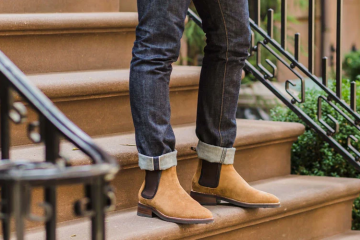1. The Evolution of Handbags
Handbags have come a long way from being simple carrying tools to becoming one of the most iconic accessories in fashion history. In ancient times, both men and women used bags to carry essential items, but over the centuries, the handbag transformed into a statement of luxury and status, particularly for women. The early 20th century saw the rise of designer brands like Louis Vuitton and Hermès, which began crafting handbags that not only served a practical purpose but also symbolized elegance and refinement. Today, custom tote bags are available in countless styles, shapes, and materials, each with its own distinct purpose, from casual totes to high-end clutches.
The evolution of handbags reflects societal changes as well. As women’s roles expanded in the workplace and public life, handbags became essential for carrying not just personal items, but also professional tools like phones, planners, and laptops. The demand for versatile and stylish bags grew, leading to innovations in design and functionality. Modern handbags often strike a balance between aesthetics and utility, ensuring that women can move through their daily routines with ease while maintaining a sense of personal style.
2. The Impact of Designer Handbags on Fashion
Designer handbags have a profound influence on fashion culture, often setting trends and defining the styles of entire seasons. Brands like Chanel, Gucci, and Prada create bags that are not only luxurious but also works of art, crafted with attention to detail and high-quality materials. These handbags often come with hefty price tags, symbolizing exclusivity and prestige. Owning a designer handbag is, for many, a status symbol, a way to display taste, wealth, and sophistication. For fashion enthusiasts, handbags are not just accessories—they are investments that can even appreciate in value over time.
Designer handbags also contribute significantly to brand identity. Iconic bags like the Chanel 2.55, the Hermès Birkin, and the Louis Vuitton Neverfull have become timeless pieces that transcend trends, making them highly sought after by collectors and fashion lovers alike. These handbags are carefully crafted to stand the test of time, both in terms of durability and style. For many, the appeal of designer bags lies in their ability to elevate any outfit, instantly adding a touch of luxury and class. They play a key role in the fashion industry, driving brand loyalty and sparking inspiration for other fashion products.
3. Different Types of Handbags for Every Occasion
The variety of handbags available today ensures that there is a perfect bag for every occasion. From functional backpacks to elegant evening clutches, the options are endless. One of the most popular and versatile types is the tote bag, known for its spacious interior and casual yet stylish design. Tote bags are perfect for everyday use, whether for work, school, or a shopping trip. Another common type is the crossbody bag, which provides convenience and hands-free mobility, making it ideal for busy days when you’re constantly on the go.
For formal events or nights out, clutches and evening bags come into play. These small, handheld bags are often designed with luxurious materials like satin, silk, or embellished with rhinestones and beads to add glamour to an outfit. For women who prefer more structure, the satchel or structured handbag offers a professional look with multiple compartments to organize belongings. Lastly, the backpack purse has become a popular option, merging style and practicality for those who need to carry more but still want to look fashionable. Each type of handbag serves a different purpose, allowing women to express their style while meeting their functional needs.
4. Materials and Craftsmanship in Handbag Production
The quality and craftsmanship of handbags are heavily influenced by the materials used in their production. Leather, in particular, has been a favored material for centuries due to its durability, flexibility, and luxurious feel. There are different types of leather, including full-grain, top-grain, and suede, each offering a unique texture and appearance. Full-grain leather is the highest quality, known for its strength and natural beauty, while suede provides a soft, velvety finish. In addition to leather, many handbags are made from other materials such as canvas, nylon, and faux leather, each offering a different aesthetic and price point.
Craftsmanship plays a crucial role in determining the value of a handbag. Designer bags are often handcrafted by skilled artisans who pay attention to every detail, from stitching to hardware. This meticulous process ensures that the bag is not only beautiful but also durable and functional. The hardware, including zippers, clasps, and handles, is often made from high-quality metals like gold or silver, adding to the bag’s elegance. Many high-end brands use custom hardware and unique embellishments to differentiate their products. In contrast, mass-produced handbags may use synthetic materials and machine assembly, resulting in a lower price point but also a shorter lifespan. The materials and craftsmanship of a handbag are important factors in determining its overall quality, longevity, and price.
5. Handbags as a Reflection of Personal Style
Handbags are more than just accessories; they are extensions of personal style and identity. The choice of handbag can say a lot about a person, from their fashion preferences to their lifestyle. A minimalist may opt for a sleek, neutral-colored bag with clean lines, while someone who loves bold fashion might choose a brightly colored or patterned handbag to make a statement. Handbags allow individuals to express their creativity and personality, making them an essential part of any wardrobe.
In addition to reflecting personal taste, handbags also serve as a practical tool that complements daily activities. For instance, a working professional may choose a structured, functional bag that can carry a laptop and documents, while a fashion-forward individual might prefer a designer clutch for social events. The versatility of handbags makes them a unique fashion accessory that can adapt to different roles throughout the day. Moreover, many women view their handbags as part of their overall outfit, carefully coordinating colors and styles to achieve a polished look. Whether used for practicality or fashion, handbags are a powerful form of self-expression.
Conclusion
Handbags hold a unique place in the fashion world, blending function with style. From their rich history and evolution to their impact on fashion and personal style, handbags have become essential accessories for women worldwide. The variety of designs, materials, and craftsmanship ensures that there is a handbag for every occasion and every personality. Whether you’re carrying a simple tote or a luxurious designer clutch, handbags serve as both a fashion statement and a practical tool, making them a timeless and indispensable part of any wardrobe.




